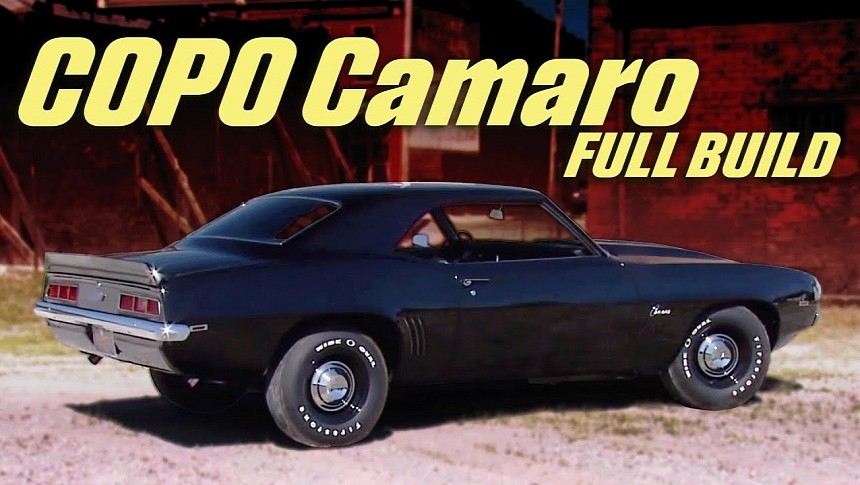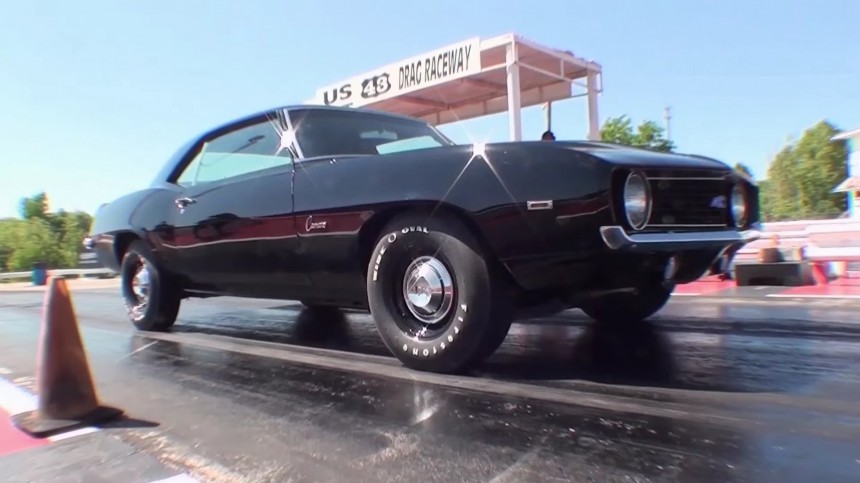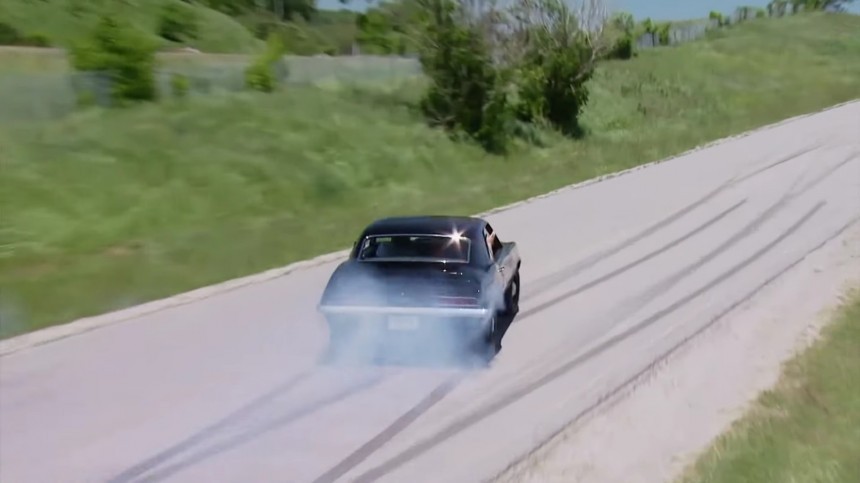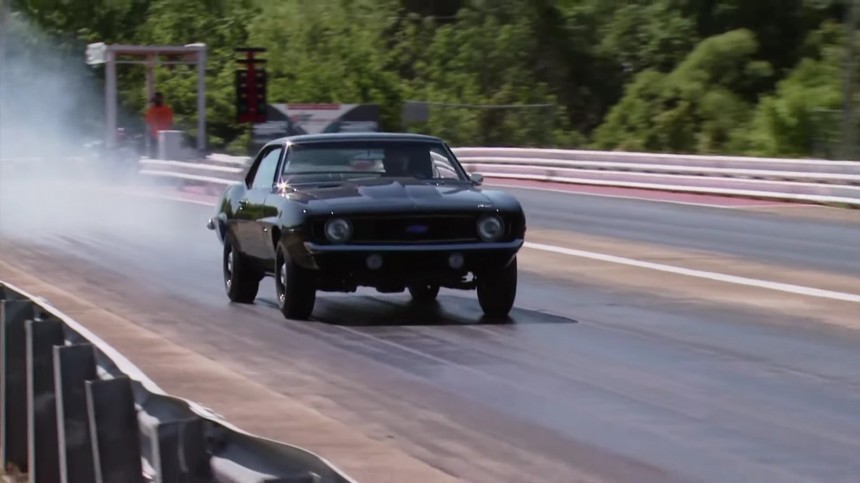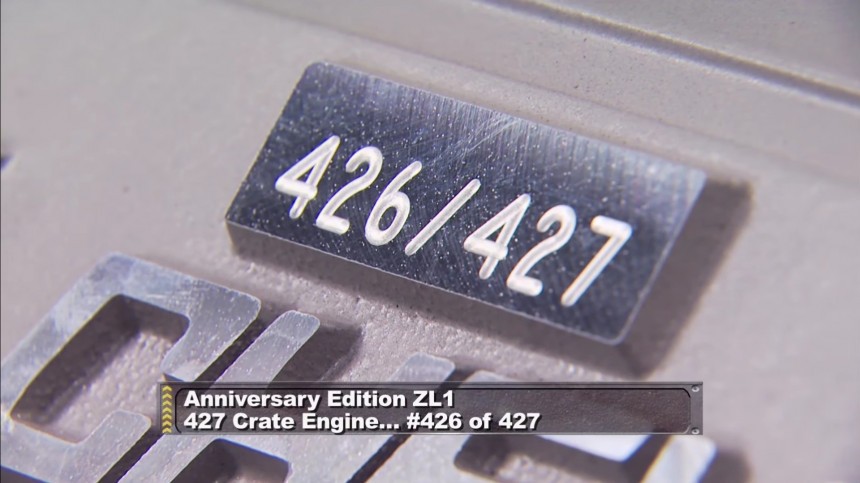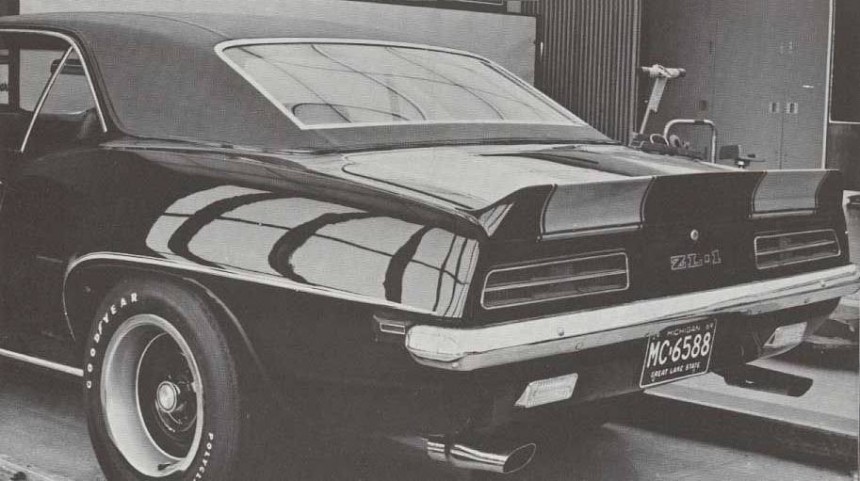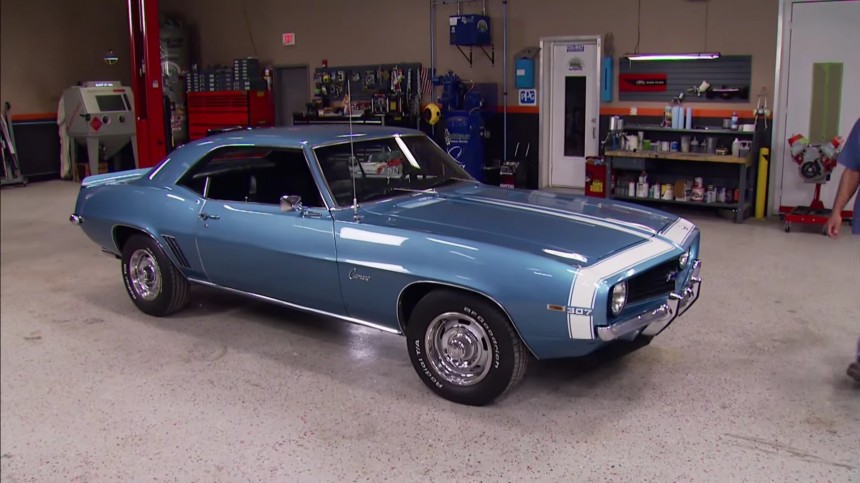General Motors’ ban on racing from January 1963 might have capped the corporation’s involvement in motorsports. Still, it did little to keep its cars from winning races and building fame. After all, following the 421 Super Duty Z-11 Impala of that year, several other legendary V8 emerged before the decade’s end.
Corvette’s L88 would be a good example; we can bring another, more elusive – and more powerful – one to the table: the ZL-1. The engine garnered its aura of myth following one salesman’s brilliant decision to convince GM to drop the almighty V8 in an emblematic name of the muscle car panoply: the Chevrolet Camaro.
Instrumental in this rage against the corporation was a specific Chevrolet Dealer from Illinois: Fred Gibbs. The man used a clever corporate tool against the GM racing ban: the Central Office Production Order program – the COPO.
Few four-letter words possess such automotive power as this acronym: HEMI and Boss would be the immediate associations. Unlike the Mopar and FoMoCo monikers, the COPO was not a mechanical feature in its own right but rather a workaround for dealers.
Before the COPO, dealers took the long and costly road of ordering stock automobiles and performance parts separately and assembling them at the dealership. The program – designed to facilitate orders for commercial fleets (such as taxis and police cars) – allowed dealerships to request specific builds directly from the factory.
Arguably the most coveted of these proverbial temptations was the 1969 ZL-1 Camaro. This simple but lethal combination between a heavy-duty suspension, brakes, transmission, and an all-aluminum 427-CI (seven liters) big-block engine was a colossus with clay feet.
The car was a drag-racing weapon – it wasn’t meant to be anything more than that – but what killed it in its tracks was a price even more outrageous than its performance. A fresh-of-the-assembly-line, high-optioned '69 Camaro with the standard 327 V8 (5.4-liter) would cost about $4,000. The COPO-code 9560 engine alone of the ZL-1 Camaro was a ghastly $4,160.50.
Only 69 were assembled – 50 of which were ordered by Frank Gibbs, the other 19 by various dealers that got wind of this monster. ZL-1 Camaros dominated NHRA and AHRA Super Stock and Pro Stock racing. At the 1969 National Hot Rod Association Winternationals, the first ZL1 produced won the Super Stock Eliminator.
Unfortunately, a win on Sunday doesn’t always mean a sale on Monday – at least, not for the preposterously expensive ZL-1 Camaro. Despite garnering immediate and complete attention, the infamous machine was too expensive to appeal to its target. Conversely, Gibbs had to return 37 of his 50 special Chevys to GM – and the corporation accepted them in an unprecedented move.
It’s no wonder that we rarely come across an example in 2023 – and it’s quite a shame, frankly. Based on the architecture of the formidable Corvette L88 racing engine, the ZL1 plant made aluminum the wonder material on which to build. The cylinder block, heads, intake, and other auxiliaries were all made from the lightweight metal. Steel was used only for the forged crank, connecting rods, pushrods, and camshaft.
The result was the most thrilling American production engine ever built up to that moment. At 500 lbs (some 230 kilos), the ZL-1 weighed little more than a cast iron Chevy small-block. But no other Chevrolet V8 could push 523 dyno-proven horsepower (530 PS) at 6,750 rpm in 1969. In fact, no other engine in the United States of Automobile was even close to that rating.
Of course, allegiant to the trends of the time, Chevrolet understated the specs of its monumental ZL-1 by about 100 hp to a much less flamboyant 430 hp (436 PS) and 450 lb-ft (610 Nm). The same dyno test – performed independently by a ZL1 owner – also yielded a net 375.7 hp (381 PS) rating with all accessories installed, production exhaust manifolds, a chambered exhaust system, and timing set at 36°.
All ZL-1 Camaros had the 4.10:1 12-bolt Positraction rears and a Hydramatic three-speed automatic or the Rock Crusher Muncie four-speed manual. Very little else was installed on the car in a futile attempt to keep the prices within Earth’s low orbit.
With a 12.5:1 compression, aluminum open-chamber, big-port heads, a practically indestructible valvetrain, and bottom end, and an 850-CFM Holley four-barrel ogre carburetor, the 427 V8 would rev well above 7,000 rpm in race tune.
The ZL-1 Camaro was fully street-legal, with Chevrolet’s full five-year/50,000-mile warranty. Performance was devastating – the battle-ready Camaro would blast the quarter-mile dash in the high 11s or low 12s.
Not a single ZL-1 Camaro sold from the 1969 production run had any indication about its hyper-athletic prowess: no decals, no special badging, no exclusive paint jobs. They were, in fact, highly discrete in apparel; not a single one was painted black, for example – except for two.
The first one was a prototype sporting a massive “ZL-1“ emblem under the trunk keylock – as we can see in the photo above. The second one is a tribute built by the muscle car enthusiasts from the Gunpowder & Gasoline YouTube channel.
The gearheads took a crate ZL-1 engine – the anniversary edition serial number 426 out of the total production of 427 big-blocks – and a 307 V8 equipped Camaro from 1969 and mated the two together.
Of course, it took a lot of work, skill, and reproduction performance parts, such as the four-speed manual gearbox, clutch assembly, or instrument cluster. On top of that, the body was rust-proofed and repainted black, stripped of all the non-ZL-1 creature comfort add-ons, and restored to perfection.
What came out of their hands is in the video below – probably one of the best tributes to a legendary machine that was simply too costly to rise as high and shine as bright as it would have deserved. What smothered the project was a strategic decision from GM.
The prices of the optional extras were set according to their respective production costs. And those costs spread over the ZL-1 production run, not the entire Camaro build range. That’s why a well-optioned ZL would have soared to $8,500. It was above almost anything in General Motors’ portfolio – even the Cadillacs would have looked up to this Camaro label.
Instrumental in this rage against the corporation was a specific Chevrolet Dealer from Illinois: Fred Gibbs. The man used a clever corporate tool against the GM racing ban: the Central Office Production Order program – the COPO.
Few four-letter words possess such automotive power as this acronym: HEMI and Boss would be the immediate associations. Unlike the Mopar and FoMoCo monikers, the COPO was not a mechanical feature in its own right but rather a workaround for dealers.
Arguably the most coveted of these proverbial temptations was the 1969 ZL-1 Camaro. This simple but lethal combination between a heavy-duty suspension, brakes, transmission, and an all-aluminum 427-CI (seven liters) big-block engine was a colossus with clay feet.
The car was a drag-racing weapon – it wasn’t meant to be anything more than that – but what killed it in its tracks was a price even more outrageous than its performance. A fresh-of-the-assembly-line, high-optioned '69 Camaro with the standard 327 V8 (5.4-liter) would cost about $4,000. The COPO-code 9560 engine alone of the ZL-1 Camaro was a ghastly $4,160.50.
Unfortunately, a win on Sunday doesn’t always mean a sale on Monday – at least, not for the preposterously expensive ZL-1 Camaro. Despite garnering immediate and complete attention, the infamous machine was too expensive to appeal to its target. Conversely, Gibbs had to return 37 of his 50 special Chevys to GM – and the corporation accepted them in an unprecedented move.
It’s no wonder that we rarely come across an example in 2023 – and it’s quite a shame, frankly. Based on the architecture of the formidable Corvette L88 racing engine, the ZL1 plant made aluminum the wonder material on which to build. The cylinder block, heads, intake, and other auxiliaries were all made from the lightweight metal. Steel was used only for the forged crank, connecting rods, pushrods, and camshaft.
Of course, allegiant to the trends of the time, Chevrolet understated the specs of its monumental ZL-1 by about 100 hp to a much less flamboyant 430 hp (436 PS) and 450 lb-ft (610 Nm). The same dyno test – performed independently by a ZL1 owner – also yielded a net 375.7 hp (381 PS) rating with all accessories installed, production exhaust manifolds, a chambered exhaust system, and timing set at 36°.
All ZL-1 Camaros had the 4.10:1 12-bolt Positraction rears and a Hydramatic three-speed automatic or the Rock Crusher Muncie four-speed manual. Very little else was installed on the car in a futile attempt to keep the prices within Earth’s low orbit.
The ZL-1 Camaro was fully street-legal, with Chevrolet’s full five-year/50,000-mile warranty. Performance was devastating – the battle-ready Camaro would blast the quarter-mile dash in the high 11s or low 12s.
Not a single ZL-1 Camaro sold from the 1969 production run had any indication about its hyper-athletic prowess: no decals, no special badging, no exclusive paint jobs. They were, in fact, highly discrete in apparel; not a single one was painted black, for example – except for two.
The gearheads took a crate ZL-1 engine – the anniversary edition serial number 426 out of the total production of 427 big-blocks – and a 307 V8 equipped Camaro from 1969 and mated the two together.
Of course, it took a lot of work, skill, and reproduction performance parts, such as the four-speed manual gearbox, clutch assembly, or instrument cluster. On top of that, the body was rust-proofed and repainted black, stripped of all the non-ZL-1 creature comfort add-ons, and restored to perfection.
The prices of the optional extras were set according to their respective production costs. And those costs spread over the ZL-1 production run, not the entire Camaro build range. That’s why a well-optioned ZL would have soared to $8,500. It was above almost anything in General Motors’ portfolio – even the Cadillacs would have looked up to this Camaro label.
